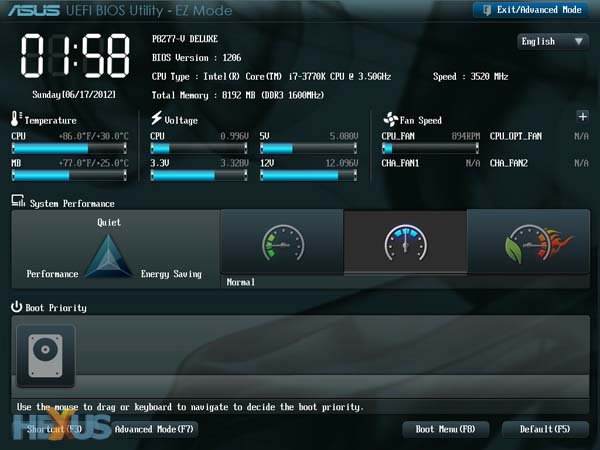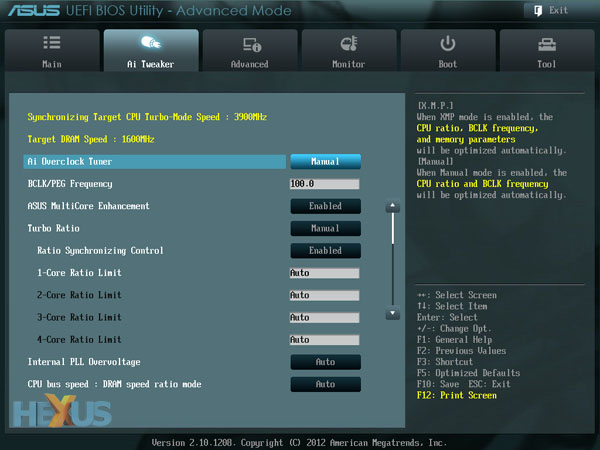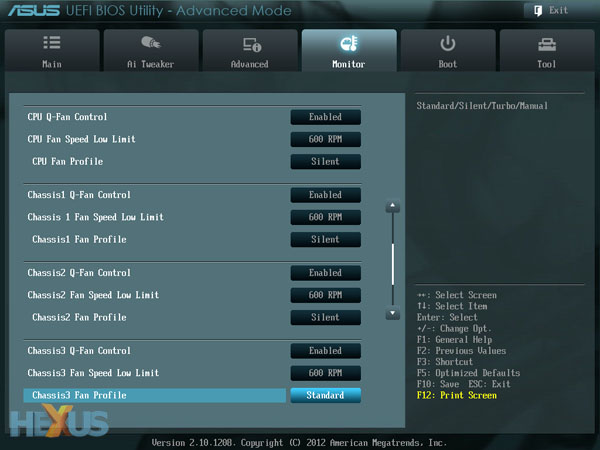BIOS
It's no secret that we're fans of ASUS' recent BIOSes. Feature-rich, easy-to navigate, and intuitively designed, there's a lot to like. Per normal, there's a simple (shown above) and advanced section (shown below). At-a-glance settings are clear and obvious, too.
Any self-respecting enthusiast heads right over to AI Tweaker. One aspect to note is that, by default, ASUS has the 'MultiCore Enhancement' set to enabled. This feature overrides Intel's Turbo Boost technology - which sets the specific frequency on each core - and rather than run the stepped-up MHz on a per-core basis, all cores are run at the maximum (single-core) Turbo Boost frequency. For a Core i7-3700K this means the chip running at 3.9GHz when under load. MultiCore Enhancement is a performance-boosting feature which is appreciated, but the problem here is that ASUS doesn't draw specific attention to it; the user won't know it's running unless they go into the BIOS. We switched it off during benchmarking, keeping parity with other boards in the upcoming line-up.
ASUS is hot on the voltage front. We like the fact that any figure can be directly pressed into the selection box. Interestingly, on our engineering-sample processor, by default, this ASUS board inputs the lowest CPU voltage of any of the Z77 motherboards we've tested.
Perhaps what sets ASUS boards a cut above most is the fan-speed selections. They can be set to lower limits, upper limits and with respect to temperature. The same controls are replicated in an operating system-based program, FAN Expert 2, and it goes further by providing fixed-speed modes, as well.
ASUS also enables the user to update the BIOS one of two ways: one can either use the 'Tool' mode and update it from the local drive or USB stick. Also, rather neatly, as mentioned on the previous page, the BIOS can be updated without even needing a CPU or memory in the motherboard. Overall, an above-average BIOS befitting a high-end board.













